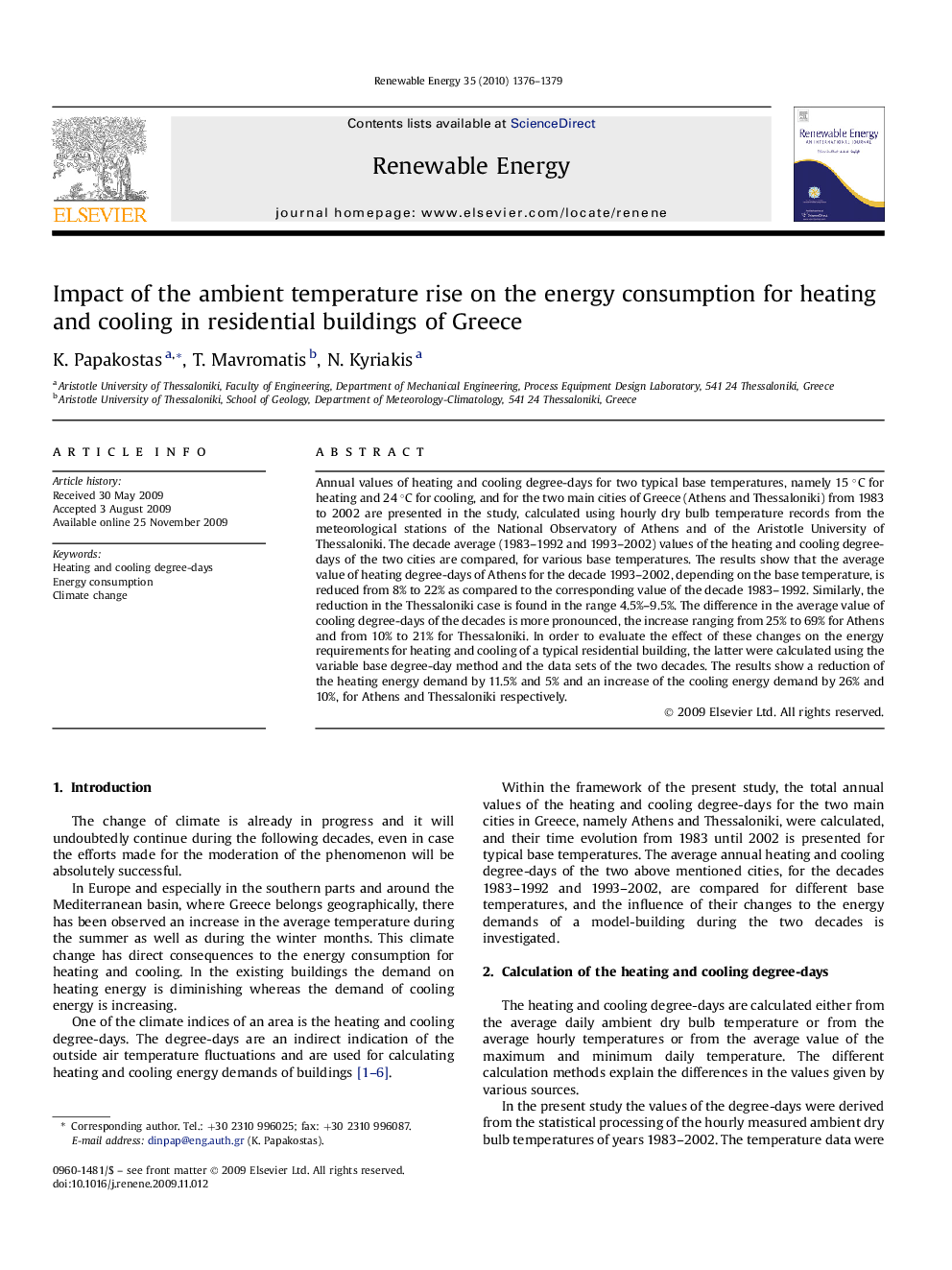| Article ID | Journal | Published Year | Pages | File Type |
|---|---|---|---|---|
| 301819 | Renewable Energy | 2010 | 4 Pages |
Annual values of heating and cooling degree-days for two typical base temperatures, namely 15 °C for heating and 24 °C for cooling, and for the two main cities of Greece (Athens and Thessaloniki) from 1983 to 2002 are presented in the study, calculated using hourly dry bulb temperature records from the meteorological stations of the National Observatory of Athens and of the Aristotle University of Thessaloniki. The decade average (1983–1992 and 1993–2002) values of the heating and cooling degree-days of the two cities are compared, for various base temperatures. The results show that the average value of heating degree-days of Athens for the decade 1993–2002, depending on the base temperature, is reduced from 8% to 22% as compared to the corresponding value of the decade 1983–1992. Similarly, the reduction in the Thessaloniki case is found in the range 4.5%–9.5%. The difference in the average value of cooling degree-days of the decades is more pronounced, the increase ranging from 25% to 69% for Athens and from 10% to 21% for Thessaloniki. In order to evaluate the effect of these changes on the energy requirements for heating and cooling of a typical residential building, the latter were calculated using the variable base degree-day method and the data sets of the two decades. The results show a reduction of the heating energy demand by 11.5% and 5% and an increase of the cooling energy demand by 26% and 10%, for Athens and Thessaloniki respectively.
